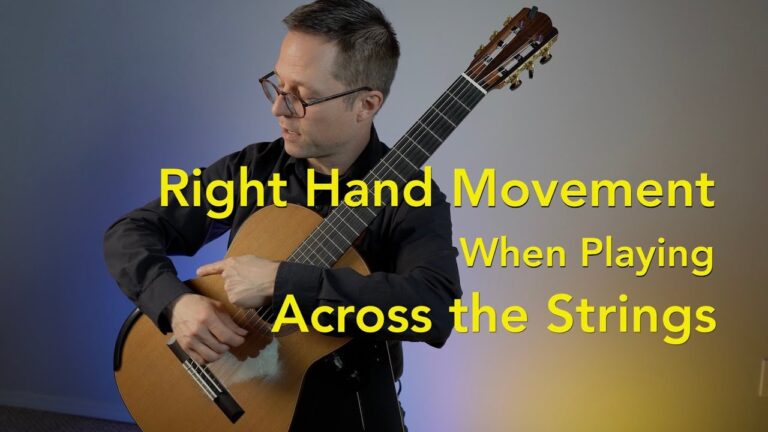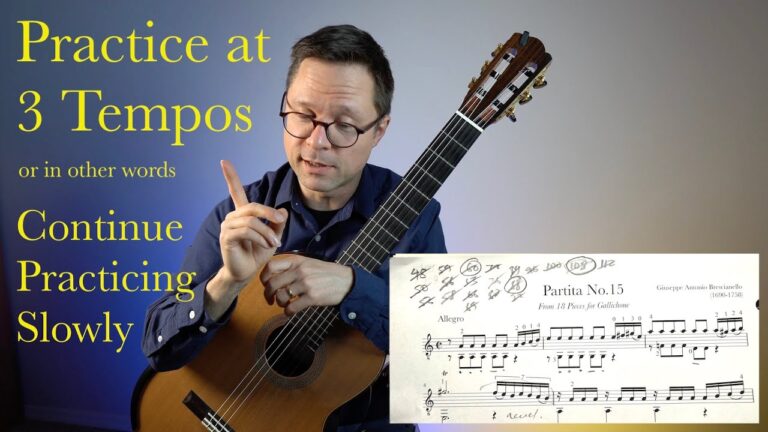Preludio from Sonate VII in D Minor by Ludovico Roncalli (1654 -1713). PDF or hardcopy sheet music and free video lesson for classical guitar. This performance and lesson comes from my book Classical Guitar Repertoire Lessons Grade 6 – Five pieces at the grade six level with dedicated lessons preparing you for each piece. In the lesson I cover some scales, discuss the free arpeggiation of the chords, and then do a walk-through and talk about the motifs, sequences, and cadences.
Jump to a section: Intro (1:23), Scales (2:48), Chord Arpeggios (7:03), Walk-Through and Motifs (8:58).
Preludio from Sonate VII in D Minor by Ludovico Roncalli (1654 -1713) – Roncalli was a Baroque guitarist who played a five string instrument very similar to the modern guitar. The main difference between the modern and Baroque instruments is that the Baroque guitar has groups of strings (courses). Roncalli most likely used a tuning that is similar to the guitar but with octave tunings on the 5th and 4th course.
During the Baroque era, preludes could be stand alone pieces but were often the first movement of an ordered collection of pieces called a suite or sonata (not to be confused with the Classical era sonata). Suites were multi-movement works containing stylized compositions and dances that shared key structures and motivic elements. The prelude often explored the harmonies of the suite and sometimes motifs as well. In lute music the preludes were sometimes, but not always, rhythmically free, and sometimes without barlines and rhythms. Lute players might even improvise their preludes and use the opportunity to do some fine tuning of the strings. However, most preludes, such as the works of Bach or this prelude by Roncalli, were very structured and complex in their compositional elements. For this prelude I recommend keeping the rhythms and beat correct but allowing a certain amount of exploratory freedom to the motifs and musical momentum.




